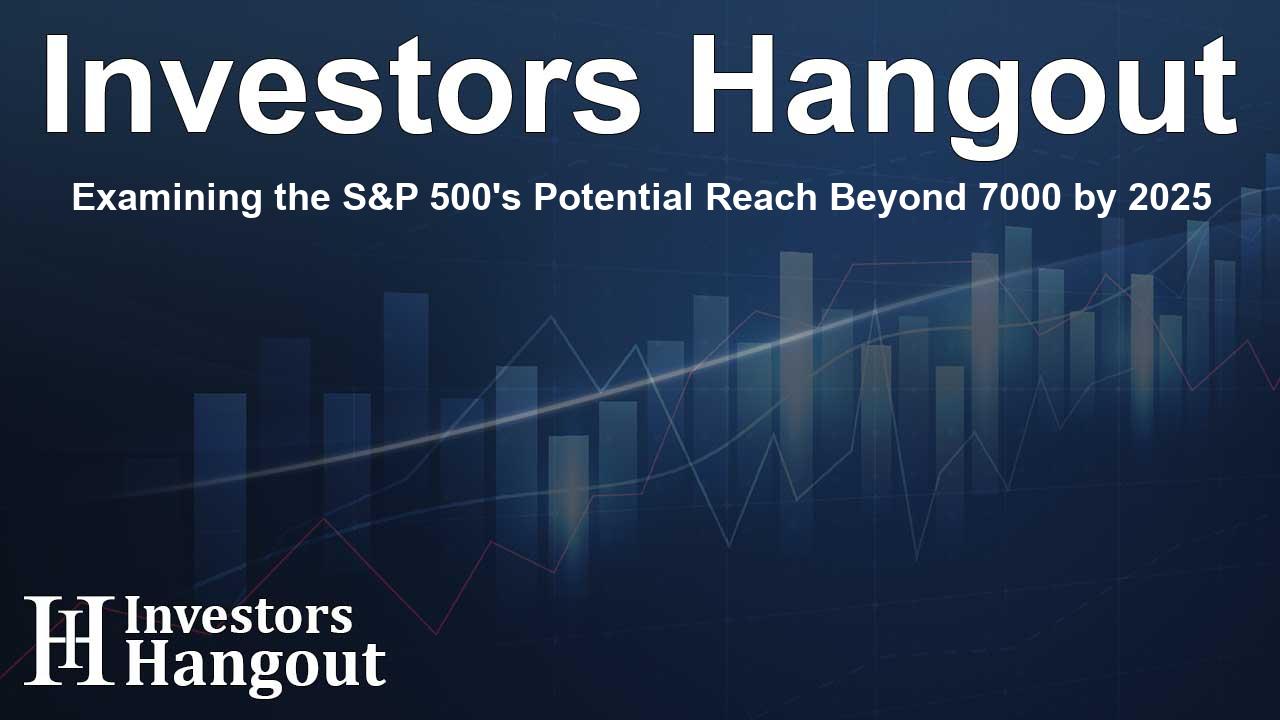Examining the S&P 500's Potential Reach Beyond 7000 by 2025

Understanding the Future of the S&P 500
In my experience running a market analysis service for a vast audience, including over 8500 members and nearly 1000 money managers, numerous discussions surrounding stock market predictions come to light. A recent observation from one of our members rings true:
“I was just watching financial news [I know the worst thing I could do.] The commentator was discussing the number of analysts on Wall Street declaring the 60:40 portfolio is dead. Forget about bonds, gold and cash. Investors should be 100% stocks and tech stocks should be the majority of that. Those of us who have been around for more than a minute have heard this before.”
This reflects a notably bullish sentiment expressed by Wall Street analysts regarding the stock market's performance, suggesting that a target of 7000 for the S&P 500 by 2025 seems attainable.
Analyzing Current Bullish Sentiments
It’s intriguing to see how some analysts have commented that expecting modest growth from SPY is quite pessimistic. For instance, one analyst mentioned:
"I'd say expecting SPY to rise only 10-15% next year is pretty bearish. It rose 25% in 2023 and 30% in 2024. It should rise about 25-30% again if it's a normal year. Then again, if a deep recession hits, we might only observe a rise about 10-15%."
This optimistic view isn’t limited to just analysts; numerous comments from investors also reflect similar sentiments. Some confidently assert:
“we will NEVER see 4100 again.”
“Better chance at 8k than 4K at end of 2025.”
“A 20-25% drop of the S&P is simply not possible.”
The Analysts' Consensus on Market Trends
Many renowned financial institutions like J.P. Morgan, UBS, and Goldman Sachs expect the S&P 500 to range between 6500-7000 by the close of 2025. This consensus suggests that optimism is well-founded, but it does prompt a deeper examination of the trends and underlying behaviors of forecasts.
History has shown that when market trends seem overwhelmingly positive, the prevailing belief is that this momentum will invariably continue. Looking back to October 2022, for instance, there was a strong consensus among analysts predicting further declines. Surprisingly, I advised our community to prepare for a significant market rebound soon after, targeting levels around 4300, which subsequently occurred.
Behavior Patterns Among Investors
It's crucial to note that a majority of market participants, including professional analysts, often display herding tendencies. As stated in Daniel Crosby’s insights from "The Behavioral Investor," this can lead to groupthink where consensus forecasts can be notably inaccurate.
[C]ontrarian investor David Dreman found that most (59%) of Wall Street consensus forecasts miss their targets by gaps so large as to make the results unusable – either undershooting or overshooting the actual number by more than 15%.”
A Closer Look at Historical Predictions
Delving into past analyst performance can provide perspective on current forecasts. Studies conducted have revealed startling inaccuracies in stock predictions. For instance, during the period from 2000 to 2008, forecasts were often significantly off-target, as highlighted in the analysis by various financial experts. The average target price was frequently higher than what the market experienced.
James Montier observed that in 2008, the average forecast anticipated a 28% increase while the market actually fell by 40%.
Investment Lessons from Past Trends
This historical data regarding analysts reflects not just on their predictions but also on their general sentiment—often optimistic, yet frequently misguided. Robert Olson highlighted that even expert predictions regarding corporate earnings showed positive biases and low accuracy.
“Experts’ earnings predictions exhibit positive bias and disappointing accuracy...”
Thus, while the current bullish outlook on the S&P 500 for 2025 may seem compelling, it’s vital to evaluate these predictions critically. Behaviors from analysts in previous years remind us that the assumptions of continuous growth can sometimes lead to false confidence.
Frequently Asked Questions
What is the expected target for the S&P 500 in 2025?
Many analysts from top firms believe the S&P 500 could reach between 6500-7000 by the end of 2025.
Are investor sentiments currently bullish or bearish?
Investor sentiments appear to be increasingly bullish, with many arguing that significant drops in the index are improbable.
Why do analysts often miss their targets?
Analysts frequently fall victim to herding behavior and can be overly optimistic, leading to substantial forecasting inaccuracies.
What has historical data shown about market predictions?
Historical analyses indicate that analysts have consistently struggled to accurately predict market movements, often missing their targets by large margins.
What should investors consider when evaluating analyst predictions?
Investors should critically assess analyst forecasts, understanding potential biases and the tendency for groupthink in market predictions.
About Investors Hangout
Investors Hangout is a leading online stock forum for financial discussion and learning, offering a wide range of free tools and resources. It draws in traders of all levels, who exchange market knowledge, investigate trading tactics, and keep an eye on industry developments in real time. Featuring financial articles, stock message boards, quotes, charts, company profiles, and live news updates. Through cooperative learning and a wealth of informational resources, it helps users from novices creating their first portfolios to experts honing their techniques. Join Investors Hangout today: https://investorshangout.com/
Disclaimer: The content of this article is solely for general informational purposes only; it does not represent legal, financial, or investment advice. Investors Hangout does not offer financial advice; the author is not a licensed financial advisor. Consult a qualified advisor before making any financial or investment decisions based on this article. The author's interpretation of publicly available data shapes the opinions presented here; as a result, they should not be taken as advice to purchase, sell, or hold any securities mentioned or any other investments. The author does not guarantee the accuracy, completeness, or timeliness of any material, providing it "as is." Information and market conditions may change; past performance is not indicative of future outcomes. If any of the material offered here is inaccurate, please contact us for corrections.